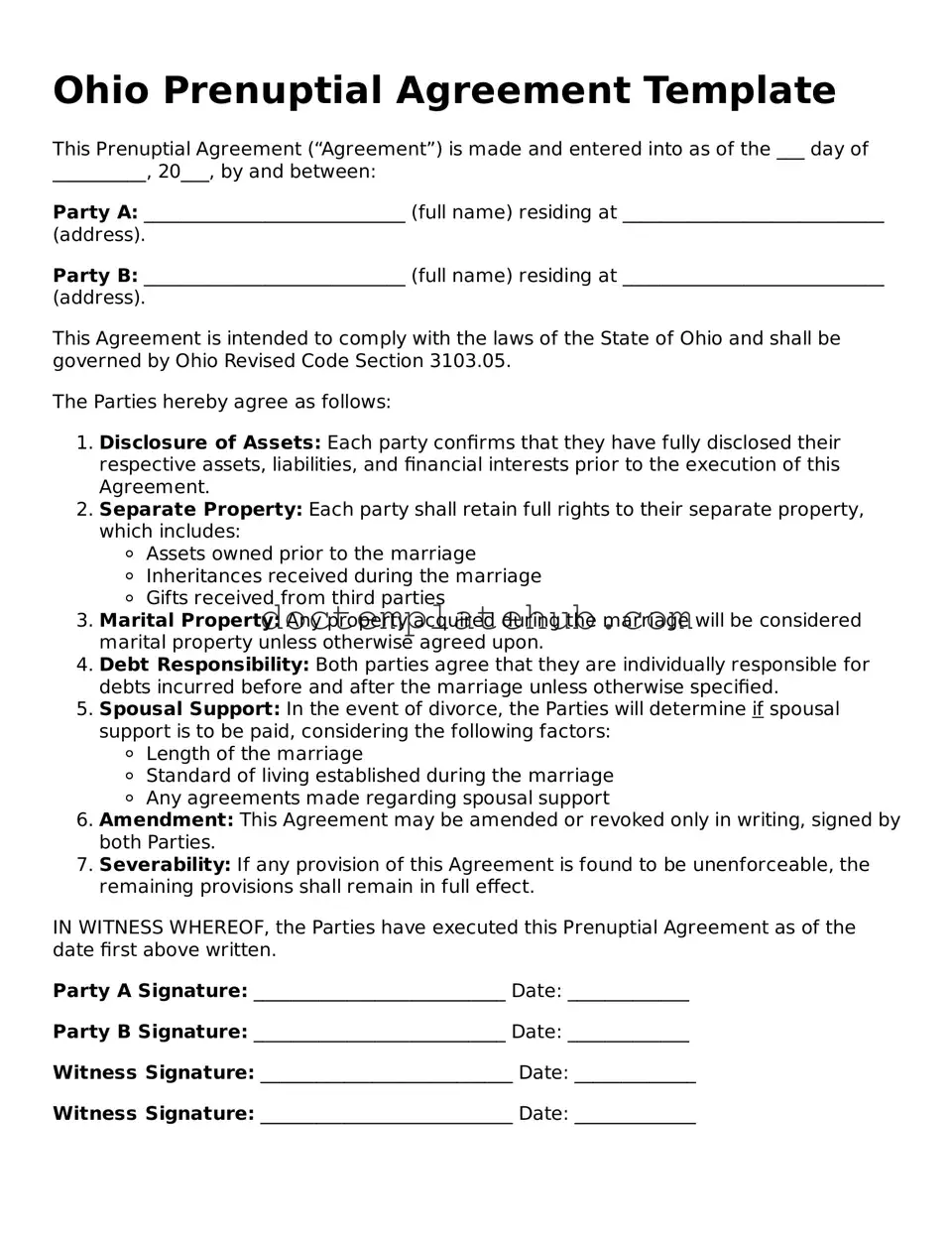What is a prenuptial agreement in Ohio?
A prenuptial agreement, often referred to as a "prenup," is a legal document created by two individuals before they marry. This agreement outlines the distribution of assets and responsibilities in the event of a divorce or separation. In Ohio, a prenup can cover various topics, including property rights, spousal support, and the handling of debts. It serves to protect each party's interests and can help minimize conflicts should the marriage end. While not required by law, having a prenup can provide peace of mind and clarity for both partners.
How do I create a prenuptial agreement in Ohio?
Creating a prenuptial agreement in Ohio involves several steps. First, both parties should openly discuss their financial situations and expectations for the marriage. It is advisable to consult with separate legal counsel to ensure that each person's interests are adequately represented. Once both parties agree on the terms, the prenup should be drafted, ideally with the assistance of an attorney. After drafting, both parties must sign the document in the presence of a notary public to ensure its validity. It is crucial that the agreement is fair and does not include any illegal provisions to be enforceable in court.
Are there any requirements for a prenuptial agreement to be valid in Ohio?
Yes, certain requirements must be met for a prenuptial agreement to be considered valid in Ohio. Both parties must enter into the agreement voluntarily, without any form of coercion or duress. Full disclosure of assets and debts is essential; both parties should have a clear understanding of each other's financial situations. The terms of the agreement must be fair and reasonable at the time of signing. Additionally, the agreement should be in writing and signed by both parties in front of a notary public. If these conditions are met, the prenup is likely to be enforceable in court.
Can a prenuptial agreement be modified or revoked in Ohio?
Yes, a prenuptial agreement can be modified or revoked in Ohio, but this process must be done in writing. Both parties must agree to any changes, and the revised agreement should be signed and notarized just like the original. If one party wishes to revoke the agreement entirely, both parties must consent to this change. It is important to document any modifications or revocations to avoid confusion or disputes in the future. Keeping open communication about financial matters and any changes in circumstances can help ensure that the agreement remains relevant and fair.
What happens if we don’t have a prenuptial agreement?
If a couple does not have a prenuptial agreement in Ohio, the state's laws will dictate how assets and debts are divided in the event of a divorce. Ohio follows equitable distribution laws, meaning that marital property will be divided fairly, but not necessarily equally. This can lead to disputes over what is considered marital property versus separate property. Without a prenup, both parties may have less control over the outcome of asset distribution and spousal support. Having a prenuptial agreement can provide clarity and protection, making it a valuable consideration for couples planning to marry.
